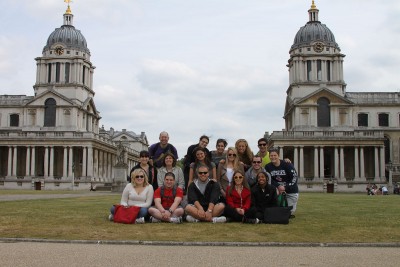The fact that today’s students are graduating into a global society where, at work, employees come in daily contact with people from around the world and, at home, neighborhoods are becoming more diverse, means that today’s teachers need to show students how to better collaborate and live in this increasingly interdependent world.
“The issue of creating globally competent educators wasn’t something previous generations had to face, but it’s a very real issue now, and its importance is only growing,” said David M. Moss, Ph.D., interim director of Teacher Educator at the University of Connecticut’s Neag School of Education. “Our goal as teachers is to prepare students for all aspects of life—for personal, social and professional success—and today, that means preparing them to be global citizens.”
Considered an expert in the field, Moss has spent the past few years speaking at conferences like those hosted by the American Association of College of Teacher Education and Society for International Educators about the need for greater cultural responsiveness in education. An associate professor in Curriculum and Instruction, he’s also played a key role in establishing programs that have caused the Neag School of Education to become a “top-tier leader” in the U.S. in global literacy and in training teachers how to lead multi-cultural classrooms.
“Student bodies have become so diverse that creating globally competent educators has really become a fundamental element of quality teaching,” Moss said.
Toward this end, the Neag School, with support from the Carnegie Corporation’s Teachers for a New Era project, established Project PREPARE-ELLs (Preparing Responsive Educators to Promote Access and Realize Excellence with English Language Learners). The program involved brining nationally recognized ELL experts to UConn’s Storrs campus to teach faculty in the Integrated Bachelor’s/Master’s Teacher Education and Teacher Certification for College Graduates programs how to infuse cultural and linguistic diversity into all disciplines.
The program has quickly become a national model. Inquiries from other universities have led to Project PREPARE co-directors Thomas Levine, Ph.D., and Elizabeth Howard, Ed.D. to craft a book about the program’s implementation and successes, with chapters written by various Neag faculty members. “One of the points it stresses is that every classroom, even those without ELL students, is culturally diverse,” Moss said.

Other Neag programs focused on global competence include:
- Education in London — a fall, semester-long study abroad program open to fifth-year Integrated Bachelor’s/Master’s students. Students live in London and work at international middle and secondary schools—many of which expose Neag students to as many as 40 diverse ethnicities and 50 spoken languages on any given day, including those from Africa and the Middle East.
- Developing Global Teachers — a two-week study abroad program open to fifth-year Integrated Bachelor’s/Master’s students with a history/social studies concentration that focuses on “Teaching World War II: Multiple Perspectives on the War in Europe.” Offered every other May, it’s geared toward students who plan to teach in middle or high school and teaches the war from the European perspective. Students visit historic sites and meet survivors and scholars in Great Britain, France, Holland and Germany.
“In the U.S., we forget that by the time America entered the war, European countries were already four years in,” Moss said, “so this class provides a very different look at the war overall and how other countries view our participation. At the end of the program, most students say it was transformational.”
His passion and belief in the importance of developing global literacy has led Moss to not just write articles for the Journal of Teacher Education, among other publications, but to join forces with the Society for International Educators to develop a new academic journal called Global Teacher Education. He’ll be founding editor.
“It’s a niche, and there’s a real gap out there,” Moss said.
He’s also in the final stages of evaluating a self-reflection tool called My Cultural Awareness Profile, or myCAP, that’s already been used by thousands of students at dozen of U.S. universities. Created with Neag Teacher Education doctoral graduate Helen Marx, an assistant professor at Southern Connecticut State University, the survey is designed to provide higher education faculty with a better understanding of preservice teachers’ current degree of cultural awareness, as well as areas to challenge and support continued growth.
“So far, the response has been wildly positive, and we hope to have it being used by even more colleges and universities in the fall,” said Moss.
“There’s a statistic that says if you look at the types of jobs available today, half of them didn’t exist 20 years ago,” Moss continued. “So what does that mean for our kids 20 years from now? What kinds of opportunities and jobs will be available to them when they become adults? None of us knows for sure, though clearly they’ll have a global perspective. Teaching global literacy today gives students an intellectual foundation they’ll be able to build on in the years to come.”
 Facebook
Facebook
 Twitter
Twitter
 LinkedIn
LinkedIn
